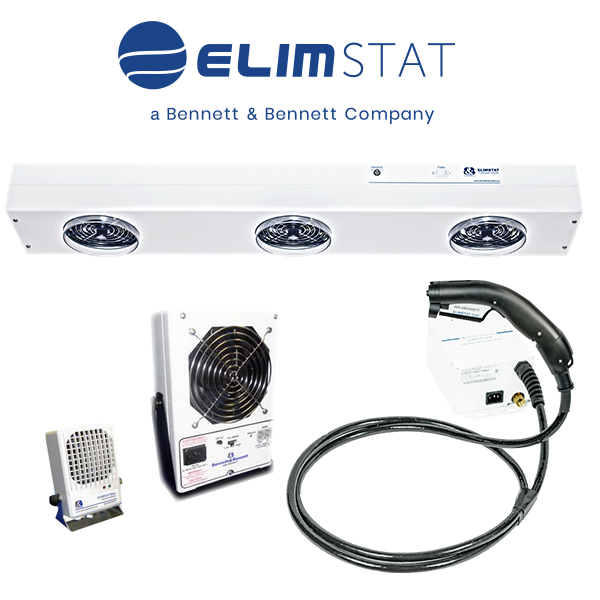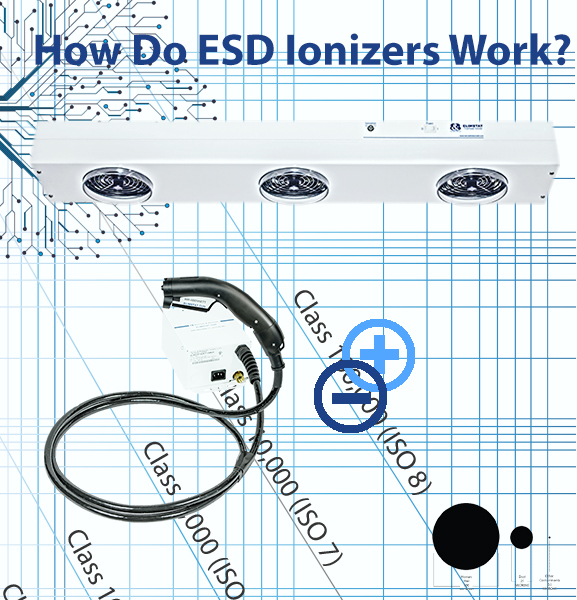
We often hear our customers say they want to “de-ionize” or “ionize” air flow to protect ungrounded electronics and work surfaces from holding a static charge.
Air Ionizers are used to clean air of static charge and particulate matter.
They are used on table tops, inside machines, from overhead, and as guns that are handheld.
When ionized air comes into contact with particulate matter it attracts or pushes particles and static off of the object you are trying to protect from electrostatic discharge (ESD) or
1. How does air become ionized?
Ionizers are made up of either a single emitter point (guns) or multiple emitter points (blowers). An emitter point is a metal needle that
When the voltage from an electrical power source is applied to an ionizer’s emitter point, it creates an electric field or “corona” around the emitter.
This corona of ions then interacts with electrons in nearby gas molecules. With the use of alternating current (AC) or direct current (DC) the ionized air is pushed by the motor in the ionizer towards the surface you are aiming it at.
2. AC vs. DC ESD Air Ionizers
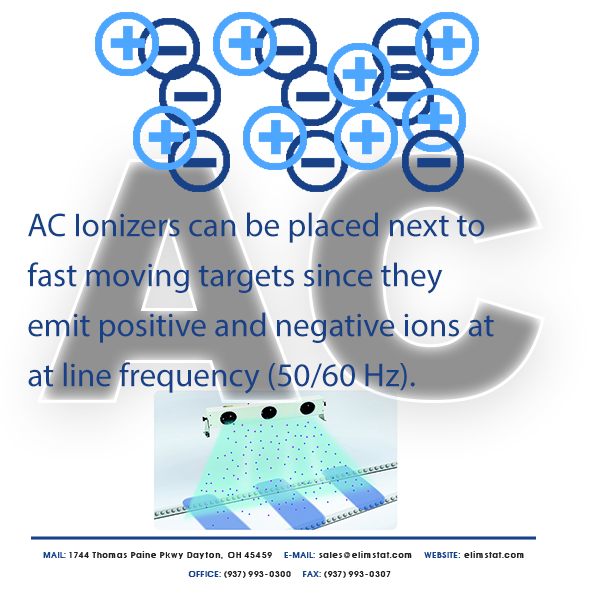
When choosing an ionizer you will want to consider how quickly you need it to work, and how close you can place it to the target.
AC Ionizers are normally preferred in automated assembly-line applications where you need to ensure charge is dissipated evenly across the surface of an object quickly.
Overhead and all-purpose blowers typically use AC ionization because they can be close to moving targets on assembly lines or overhead a workstation. Blow-Off Guns that are used to pinpoint ionization at specific spots typically also use AC ionization because of how close the operator can be to the target.
If you were to use DC ionization on an automated assembly line, “streaking” could occur: one side of an object can be reduced of its charge, and the other side of the object can be left untouched.
This is because DC ionizers have emitter points spaced apart, and are forced to shoot ions in sequence to achieve the same effect as AC ionizers running at line frequency.
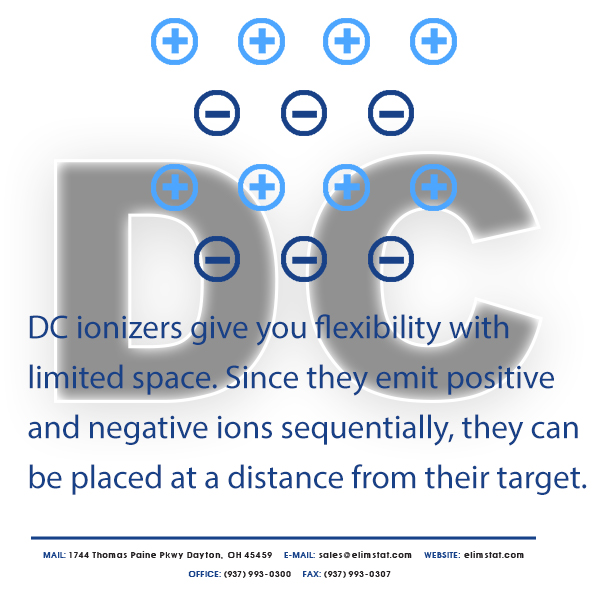
Direct current (DC) ionizers shoot both positive and negative ions through their emitter points at constant rates.
Since the ions are emitted from separate points, there is much less recombination of ions over distance– which can cause charge to accumulate in the air.
In fact, some DC ionizers are used in clean rooms without using air flow at all.
Typically it is best to consult with an ionization professional before installing DC ionization to make sure you are able to achieve your goals with the pulsing of positive and negative charges.
3. When Should I Use Ionization?
If you cannot uninstall features of your work area that are insulative the only alternative is to use ionization. Static electricity causes primarily two problems: electrostatic discharge (ESD) which permanently damages electrical circuits and electrostatic attraction (ESA) which can contaminate a controlled environment or clean room.
Electrostatic Discharge (ESD)
Most computer parts are sensitive to ESD, but some parts are more sensitive than others. The most sensitive parts are those that contain transistors or integrated circuits (ICs). These parts can be damaged or destroyed by ESD, even if you don’t feel a shock.
Here are some of the most common computer parts that are sensitive to ESD:
- Processor
- Memory
- Graphics card
- Hard drive
- Motherboard
- Power supply
ESD can also cause physical damage people can feel. For example, ionization is often used in the manufacture of plastics to dissipate the ambient charge generated in low humidity by plastic film rolling over metal production lines. The amount of charge that can build up in these situations can literally cause people to feel themselves being zapped if they are near enough the static electricity.
Electrostatic Attraction (ESA)
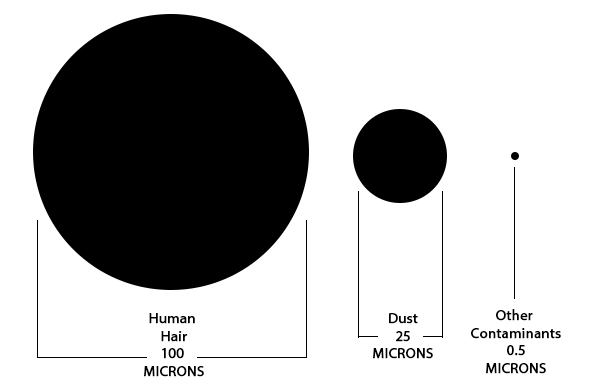
The second problem caused by static is that a charged object can attract particulate matter onto it. Known as ESA, electrostatic attraction can cause the charged object to become contaminated and no longer usable.
In fact, ionization is increasingly being used inside clean rooms as more engineers realize that air filtration alone does not ensure the elimination of particulate contamination from subvisible particles (less than 25 microns).
Ionization is increasingly being used in the manufacture of medical devices to combat ESA contamination as more manufacturing moves to clean room environments.

